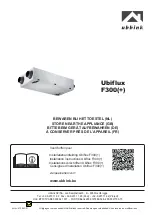
Instruction Manual
Motion Picture Loudspeaker Systems:
A Guide To Proper Selection And installation
A. Introduction:
B. Systems for Smaller Houses:
In recent years, JBL has emerged as the predomi-
nant manufacturer of loudspeaker systems for the mo-
tion picture theater. Our products are to be found in the
most prestigious screening rooms and dubbing theaters
in Hollywood, including Warner Hollywood Studios, Glen
Glenn Sound, The Burbank Studios, Universal Studios,
and Todd-AO. The recent installation of a JBL system in
the Goldwyn Theater of the Academy of Motion Picture
Arts and Sciences represents a benchmark for our com-
pany. Our components have also been selected by
Lucasfilm, Ltd., for their THX theater system.
There are several reasons for JBL's success in mo-
tion picture sound. Foremost here is our concept of flat
power response, which results in an order of improve-
ment in sound coverage in the theater. Second, our
components are of proven reliability and have extended,
inherently smooth response. In addition, we manufac-
ture components for all aspects of theater sound. JBL's
systems are very cost effective when compared to the
vented horn/multicell designs of earlier years.
This manual is intended for both theater dealers and
prospective purchasers of theater systems. It will be use-
ful as a guide to the selection and installation of systems,
and it will provide considerable theoretical background
for the specifying engineer.
1. A Summary of House Types:
By far, most of the theaters constructed today are
relatively small rectangular rooms. They are usually built
in groups known as multiplex theaters for economic rea-
sons. Most of these theaters are monophonic, with a sin-
gle loudspeaker behind the screen, and seating capacity
ranges from 200 up to 500.
2. General Acoustical Characteristics:
Motion picture theaters are generally acoustically
" d e a d " rooms, with reverberation time, even in the larg-
est houses, not exceeding 1.25 seconds. In most multi-
plex theaters, reverberation times are on the order of 0.5
seconds. The short reverberation time ensures clear dia-
log throughout the house.
The most common interior treatment of theaters is
double-fold velour, which may be placed on the side and
rear walls. This will provide freedom from unwanted re-
flections, but it does nothing to isolate one multiplex
space from the adjacent one. Here, the architect must
rely on solid block walls for good isolation.
Any unusual acoustical problems should be referred
to a qualified acoustical consultant.


































